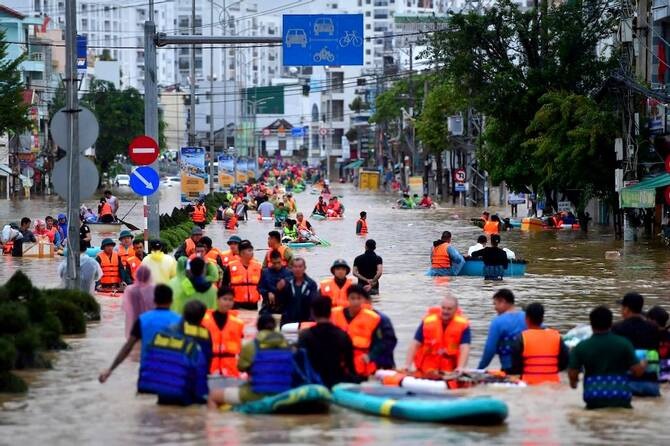Deadly floods in Vietnam and Thailand expose climate-risk gap

Monsoon chaos across Southeast Asia
Torrential rains across Vietnam’s central belt and parts of Thailand have triggered severe flooding and landslides, killing scores and displacing tens of thousands of people. After more than a week of near-continuous downpours, rivers burst their banks from Quang Tri to Lam Dong provinces, swamping towns, damaging roads and toppling homes. In Vietnam’s Dak Lak province alone, dozens of people drowned when fast-rising water swept through villages at night. Emergency teams are still searching for missing residents as families shelter in schools, pagodas and public buildings on higher ground.
Authorities say the combined death toll in Vietnam has climbed into the nineties, with further casualties reported in neighboring Thailand as flash floods tore through southern provinces. Fire engines and cars in Songkhla were left nearly submerged, a sign of how quickly normally manageable waterways turned into dangerous torrents. Rescue crews have used boats to ferry stranded residents, while engineers race to restore electricity and repair washed-out sections of highway. Local officials warn that further rainfall could yet worsen conditions in low-lying areas, even as floodwaters slowly begin to recede upstream.
The economic and social damage is still being assessed, but early estimates point to hundreds of thousands of homes inundated and large areas of crops destroyed. Coffee and pepper plantations in Vietnam’s Central Highlands, vital to local livelihoods and export earnings, have taken heavy losses. In Thailand, small businesses dependent on road traffic and tourism are counting the cost of prolonged disruptions. Public-health experts are also warning of the risk of waterborne diseases in crowded shelters, particularly among children and the elderly, if clean water and sanitation cannot be maintained.
Scientists and regional planners have long warned that Southeast Asia’s monsoon patterns are becoming more volatile as the climate warms. Heavier bursts of rainfall, combined with rapid urbanisation and deforestation in upland catchment areas, are increasing both the frequency and severity of floods and landslides. Many rural communities still lack robust early-warning systems or safe evacuation routes, making midnight deluges especially deadly. The latest disaster is already fuelling debate about whether infrastructure upgrades and land-use planning have kept pace with those risks.
Governments in both Vietnam and Thailand have announced emergency funds and pledged to rebuild damaged homes and public works. Yet rebuilding “like before” may simply recreate the same vulnerabilities in river valleys and hillsides. Aid agencies and local activists are urging investment in resilient housing, better drainage, reforestation and community-level disaster drills. For now, families picking through the mud-stained remains of their homes are focused on the basics—dry shelter, clean water and hot food. But as the waters recede, the political question will be whether this latest tragedy finally accelerates deeper adaptation to a changing climate.






















